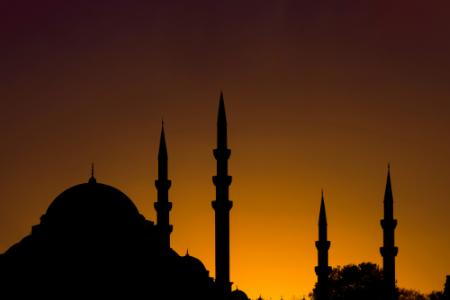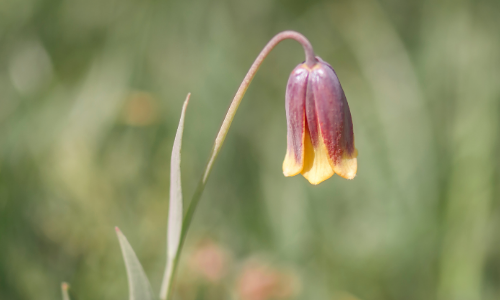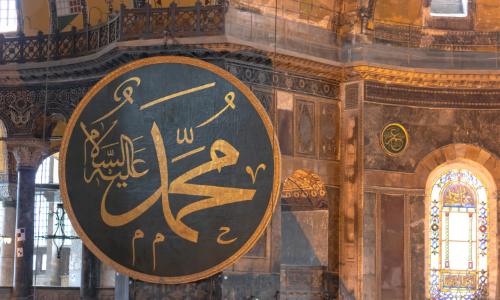The Almighty God, the possessor of infinite knowledge, created everything, living and non-living, for the recognition and understanding of His Essence.[1] Therefore, those with a discerning heart would observe the universe with curiosity and contemplation, seeking wisdom in every aspect. The sky, with its inherent tranquility, has always been one of the focal points of human curiosity and research.
“But do they, then, never observe the sky above them (to ponder Our Knowledge and Power; and reflect) how We have constructed it and adorned it, and that there are no rifts in it?” (Qaf, 50:6).
Kings decorate the ceilings of their palaces with embellishments and ornaments to provide comfort and spaciousness. However, looking at ornate ceilings cannot be compared to gazing at the sky. After a few admiring glances, it becomes tedious, and its beauty is not constant. On the other hand, the sky, adorned with clouds, is like a refreshing breeze that never tires the beholder and continuously offers solace to the souls that turn to it.
Imam Ghazali, in his book Benefits of Looking at the Sky, lists the advantages of looking at the sky as follows: “It reduces sorrow, diminishes doubt, dispels unfounded fears, reminds of God, nurtures respect for God in the heart, erases negative thoughts, provides relief to those afflicted with the sickness of love, consoles the yearning, and promotes unity among those who love each other. That sky is the qibla (direction to the Ka’ba) for those who pray.”[2]
By looking at the sky constructed with the most suitable colors for the eyes, humans can realize the boundlessness of God’s knowledge and strengthen their devotion and submission to Him. In the face of infinite knowledge, they put aside their sorrows and worries. They distance themselves from their troubles and woes. The gaps within them are filled with the blue tranquility flowing from the fountains of the sky.
So, what are the wisdoms behind the blue color of the sky?
Color Therapy: The Effects of Blue on Human Psychology
“And whatsoever He has created for you on earth of varying colors (and diverse forms and qualities): surely in that is a sign for people who reflect and are mindful.” (An-Nahl, 16:13).
Colors can have both psychological and physical effects on humans.[3] Each color has a specific wavelength characterized by low or high vibrations. In color therapy, it is accepted that these different frequencies and low or high-energy vibrations of colors can lead to certain psychological outcomes. During therapy, measurements of blood pressure, changes in heart rate, and muscle tension indexes are used to monitor the effects of colors.
When the human eye is exposed to different colors, the interaction and response of neurons are different.[4] The perceived colors, within the framework of the laws of creation, lead to certain effects through the sympathetic and parasympathetic nervous systems, resulting in the secretion of various neurochemical substances. Blue has a parasympathetic effect. As a result, blood pressure and heart rate decrease, and a feeling of relaxation occurs.[5]
Ibn Sina (Avicenna) mentioned in his work The Canon of Medicine, completed in 1025, that he used colors for the diagnosis and treatment of diseases and observed that blue slowed down blood flow and had a calming effect.[6]
Another study conducted in Wellington, the capital of New Zealand, examined the benefits of frequent contact with green and blue areas in reducing psychological distress. It was acknowledged that green and blue areas served as therapeutic or relaxing places and reduced mental distress by reducing sensory stimuli and providing mental relaxation in urban environments.[7]
In the story of humanity, although places and times change, the only thing that remains constant is the sky adorned with the blue color of the mercy of the All-Merciful, surrounding us like a dome. The ummah of a Prophet who weaves every moment of his life with threads of contemplation should understand the wisdom behind the creation of the sky and make contemplation a constant practice.[8] This way, they can access the pure taste hidden within the knowledge and love of God.
[1] M. Fethullah Gülen, Kırık Testi-1, İstanbul: Nil Yayınları, 2011, s. 211.
[2] İmam Gazali, Gökyüzüne Bakmanın Faydaları, İstanbul: Nesil Yayınları, 2023.
[3] S. Sinem Akbulak, “Mekânlar ve Renk Psikolojisi”, Çağlayan, Eylül 2022.
[4] Jueying Lyu, “Analysis of the Effect of Different Types of Colors on Human Behavior and Emotion”, Proceedings of the 2022 3rd International Conference on Mental Health, Education and Human Development (MHEHD 2022), p. 1060.
[5] Hasan Aydınlı, “Renklere Açık Ruh Dünyamız”, Sızıntı, 2004.
[6] L. Mayer, R. Bhikha, “The Historical Significance of Colour”, Ibn Sina Institute of Tibb, 2014,
tibb.co.za/philosophy-of-Tibb.html
[7] D. Nutsford , A. L Pearson, “Residential exposure to visible blue space (but not green space) associated with lower psychological distress in a capital city,” Healt&Place, 2016, pp. 70–78.
[8] M. Fethullah Gülen, Kalb İbresi (Kırık Testi-9), İstanbul: Nil Yayınları, 2011, s. 124.




